Mathematical Methodology and Metallurgical Application of Turbulence Modelling: A Review
Abstract
:1. Introduction
2. Turbulence Simulation Approaches
2.1. RANS
2.1.1. The k-ε Model
2.1.2. The k-ω Model
2.1.3. Advanced Eddy Viscosity Model
2.1.4. Reynolds Stress Model
2.2. LES Approach
2.2.1. Formulation and Subgrid-Scale Model
2.2.2. Inlet Boundary Condition
2.3. DNS Approach
3. Model Validation Technique
4. Applications
4.1. Bubble-Induced Turbulence (BIT)
4.2. Supersonic Jet Transport
4.3. Electromagnetic Suppression of Turbulence
5. Conclusions
- Due to insufficient knowledge of the turbulence physics, there is a high degree of uncertainty in modelling the higher-order correlations in a DSM simulation. It is necessary to perform fundamental studies on turbulence physics, and the DNS is an important method for those studies. Besides, advanced numerical schemes are expected to minimize the diffusive errors when solving the non-linear higher-order correlations.
- An inflow condition method, which can generate the required realistic turbulence characteristics at a reasonable computational cost, is needed for an accurate LES simulation.
- It is of significant importance to experimentally obtain accurate turbulence data such as the Reynolds stress term, turbulence kinetic energy, and its dissipation rate, especially for a densely dispersed flow. Advanced non-intrusive experimental techniques are needed to measure the flow field information and phase distribution. The obtained data can be used, for instance, to develop a reliable model considering the effect of the dispersed phase.
- The BIT is important for the turbulent flow. Due to a small size of the bubble, the induced turbulence is characterized with small spatial and temporal scales. An approach (experimental technique and/or numerical simulation) is required to obtain insight into the induced turbulence.
- Comprehensive and realistic modelling is indispensable for engineering applications, such as the inclusion of bubble coalescence and breakage, the consideration of temperature and pressure affecting the bubble behavior, the involvement of compressibility and the temperature gradient in supersonic jet flow, and the turbulence damping caused by magnetic fields. The mechanisms of turbulence modulation with respect to these aspects remain open for fundamental investigation.
Author Contributions
Funding
Data Availability Statement
Acknowledgments
Conflicts of Interest
Nomenclature
| B | Magnetic field intensity, T. |
| Instantaneous, ensemble/time-averaged, and fluctuating variable, respectively. | |
| Gravitational acceleration, m/s2. | |
| Turbulent kinetic energy, m2/s2. | |
| Characteristic length scale, m. | |
| Pressure, pressure fluctuation, Pa. | |
| Mean rate of strain tensor, s−1. | |
| Source term in k, ε, and ω equation, respectively. | |
| Instantaneous, mean (large scale), and fluctuating (subgrid scale) velocity, respectively, m/s. | |
| Bulk velocity, m/s. | |
| Greek Symbols | |
| Kronecker delta. | |
| Turbulent energy dissipation rate, m2/s3. | |
| Dynamic viscosity, Pa·s. | |
| Effective viscosity, Pa·s. | |
| Turbulent viscosity, Pa·s. | |
| Density, kg/m3. | |
| Electrical conductivity, S/m. | |
| Specific dissipation rate | |
| Subscripts | |
| , , | Coordinate direction indices. |
References
- Markatos, N.C. The mathematical modelling of turbulent flows. Appl. Math. Model. 1986, 10, 190–220. [Google Scholar] [CrossRef]
- Georgiadis, N.J.; Rizzetta, D.P.; Fureby, C. Large-eddy simulation: Current capabilities, recommended practices, and future research. AIAA J. 2010, 48, 1772–1784. [Google Scholar] [CrossRef]
- Hanjalić, K. Advanced turbulence closure models: A view of current status and future prospects. Int. J. Heat Fluid Flow 1994, 15, 178–203. [Google Scholar] [CrossRef]
- Argyropoulos, C.D.; Markatos, N.C. Recent advances on the numerical modelling of turbulent flows. Appl. Math. Model. 2015, 39, 693–732. [Google Scholar] [CrossRef]
- Boris, J.P.; Grinstein, F.F.; Oran, E.S.; Kolbe, R.L. New insights into large eddy simulation. Fluid Dyn. Res. 1992, 10, 199–228. [Google Scholar] [CrossRef]
- Launder, B.E.; Spalding, D.B. The numerical computation of turbulent flows. Meth. Appl. Mech. Eng. 1974, 3, 269–289. [Google Scholar] [CrossRef]
- Yakhot, V.; Orszag, S.A. Renormalization group analysis of turbulence: Basic theory. J. Sci. Comput. 1986, 1, 3–51. [Google Scholar] [CrossRef]
- Shih, T.H.; Liou, W.W.; Shabbir, A.; Yang, Z.; Zhu, J. A new k-ϵ eddy viscosity model for high Reynolds number turbulent flows. Comput. Fluids 1995, 24, 227–238. [Google Scholar] [CrossRef]
- Wilcox, D.C. Reassessment of the scale-determining equation for advanced turbulence models. AIAA J. 1988, 26, 1299–1310. [Google Scholar] [CrossRef]
- Menter, F.R. Two-equation eddy-viscosity turbulence models for engineering applications. AIAA J. 1994, 32, 1598–1605. [Google Scholar] [CrossRef] [Green Version]
- Patel, V.C.; Rodi, W.; Scheuerer, G. Turbulence models for near-wall and low Reynolds number flows—A review. AIAA J. 1985, 23, 1308–1319. [Google Scholar] [CrossRef]
- Smagorinsky, J. General circulation experiments with the primitive equations. Month. Wea. Rev. 1963, 91, 99–164. [Google Scholar] [CrossRef]
- Germano, M.; Piomelli, U.; Moin, P.; Cabot, W.H. A dynamic subgrid-scale eddy viscosity model. Phys. Fluids 1991, 3, 1760–1765. [Google Scholar] [CrossRef] [Green Version]
- Lilly, D.K. A proposed modification of the Germano subgrid-scale closure method. Phys. Fluids 1992, 4, 633–635. [Google Scholar] [CrossRef]
- Moin, P.; Mahesh, K. Direct numerical simulation: A tool in turbulence Research. Annu. Rev. Fluid Mech. 1998, 30, 539–578. [Google Scholar] [CrossRef] [Green Version]
- Montorfano, A.; Piscaglia, F.; Ferrari, G. Inlet boundary conditions for incompressible LES: A comparative study. Math. Comput. Model. 2013, 57, 1640–1647. [Google Scholar] [CrossRef]
- Xie, B.; Gao, F.; Boudet, J.; Shao, L.; Lu, L. Improved vortex method for large-eddy simulation inflow generation. Comput. Fluids 2018, 168, 87–100. [Google Scholar] [CrossRef] [Green Version]
- Tayebi, D.; Svendsen, H.F.; Jakobsen, H.A.; Grislingas, A. Measurement techniques and data interpretations for validating CFD multiphase reactor models. Chem. Eng. Comm. 2001, 186, 56–159. [Google Scholar] [CrossRef]
- Van Ommen, J.R.; Mudde, R.F. Measuring the gas-solids distribution in fluidized beds-a review. Int. J. Chem. React. Eng. 2008, 6, 1–29. [Google Scholar] [CrossRef]
- Hinze, J.O. Turbulence; McGraw-Hill Publishing Co.: New York, NY, USA, 1975. [Google Scholar]
- Launder, B.E. Second moment closure and its use in modelling turbulent industrial flows. Int. J. Numer. Meth. Fluids 1989, 9, 963–985. [Google Scholar] [CrossRef]
- Hanjalić, K. Introduction to Turbulence Modelling; Von Kaman Institute for Fluid Dynamics: Sint-Genesius-Rode, Belgium, 2004; pp. 1–75. [Google Scholar]
- Prandtl, L. Bericht fiber untersuchungen zur ausgebildeten turbulent. ZAMM 1925, 5, 136–139. [Google Scholar] [CrossRef]
- Spalart, P.R.; Allmaras, S.R. A one-equation turbulence model for aerodynamic flows. In Proceedings of the 30th Aerospace Sciences Meeting and Exhibit, Reno, NV, USA, 6–9 January 1992. [Google Scholar]
- Nallasamy, M. Turbulence models and their applications to the prediction of internal flows: A review. Comput. Fluids 1987, 15, 151–194. [Google Scholar] [CrossRef]
- Jones, W.P.; Launder, B.E. The prediction of laminarization with a two-equation model of turbulence. Int. J. Heat Mass Trans. 1972, 15, 301–314. [Google Scholar] [CrossRef]
- Jones, W.P.; Launder, B.E. The calculation of low-Reynolds-number phenomena with a two-equation model of turbulence. Int. J. Heat Mass Trans. 1973, 16, 1119–1130. [Google Scholar] [CrossRef]
- Launder, B.E.; Sharma, B.I. Application of the energy-dissipation model of turbulence to the calculation of flow near a spinning disc. Lett. Heat Mass Trans. 1974, 1, 131–138. [Google Scholar] [CrossRef]
- Hoffmann, G.H. Improved form of the low Reynolds number k−ε turbulence model. Phys. Fluids 1975, 18, 309–312. [Google Scholar] [CrossRef]
- Hassid, S.; Poreh, M. A turbulent energy dissipation model for flows with drag reduction. J. Fluids Eng. 1978, 100, 107–112. [Google Scholar] [CrossRef]
- Lam, C.K.G.; Bremhorst, K. A modified form of the k-ε model for predicting wall turbulence. Tans. ASME 1981, 103, 456–460. [Google Scholar] [CrossRef]
- Chien, K.Y. Predictions of channel and boundary-layer flows with a low-Reynolds-number turbulence model. AIAA J. 1982, 20, 33–38. [Google Scholar] [CrossRef]
- Reynolds, W.C. Fundamentals of Turbulence for Turbulence Modeling and Simulation in Lecture Notes for Von Karman Institute; AGARD Lecture Note Series: New York, NY, USA, 1987. [Google Scholar]
- Shih, T.H.; Zhu, J.; Lumley, J.L. A new Reynolds stress algebraic model. NASA TM 1995, 125, 1–4. [Google Scholar]
- Menter, F.R. Review of the shear-stress transport turbulence model experience from an industrial perspective. Int. J. Comput. Fluid Dyn. 2009, 23, 305–316. [Google Scholar] [CrossRef]
- Wilcox, D.C. Comparison of two-equation turbulence models for boundary layers with pressure gradient. AIAA J. 1993, 31, 1414–1421. [Google Scholar] [CrossRef]
- Wilcox, D.C. Simulation of transition with a two-equation turbulence model. AIAA J. 1994, 32, 247–255. [Google Scholar] [CrossRef]
- Peng, S.H.; Davidson, L.; Holmberg, S. A modified low-Reynolds-number k-ω model for recirculating flows. J. Fluid Eng. 1997, 119, 867–875. [Google Scholar] [CrossRef]
- Bredberg, J.; Peng, S.H.; Davidson, L. An improved k-ω turbulence model applied to recirculating flows. Int. J. Heat Fluid Flow 2002, 23, 731–743. [Google Scholar] [CrossRef]
- Resende, P.R.; Pinho, F.T.; Younis, B.A.; Kim, K.; Sureshkumar, R. Development of a low-Reynolds-number k-ω model for FENE-P fluids. Flow Turbul. Combust. 2013, 90, 69–94. [Google Scholar] [CrossRef]
- Durbin, P.A. Near-wall turbulence closure modeling without “damping functions”. Theor. Comput. Fluid Dyn. 1991, 3, 1–13. [Google Scholar]
- Durbin, P.A. On the k-ε stagnation point anomaly. Int. J. Heat Fluid Flow 1996, 17, 89–90. [Google Scholar] [CrossRef]
- Laurence, D.R.; Uribe, J.C.; Utyuzhnikov, S.V. A robust formulation of the v2−f model. Flow Turb. Combust. 2004, 73, 169–185. [Google Scholar] [CrossRef] [Green Version]
- Hanjalić, K.; Popovac, M.; Hadžiabdić, M. A robust near-wall elliptic-relaxation eddy-viscosity turbulence model for CFD. Int. J. Heat Fluid Flow 2004, 25, 1047–1051. [Google Scholar] [CrossRef]
- Billard, F.; Laurence, D. A robust k-ε2k elliptic blending turbulence model applied to near-wall, separated and buoyant flows. Int. J. Heat Fluid Flow 2012, 33, 45–58. [Google Scholar] [CrossRef]
- Billard, F.; Revell, A.; Craft, T. Application of recently developed elliptic blending based models to separated flows. Int. J. Heat Fluid Flow 2012, 35, 141–151. [Google Scholar] [CrossRef]
- Speziale, C.G. On nonlinear kl and k-ε models of turbulence. J. Fluid Mech. 1987, 178, 459–475. [Google Scholar] [CrossRef]
- Lien, F.S.; Leschziner, M.A. Assessment of turbulence-transport models including non-linear RNG eddy-viscosity formulation and second-moment closure for flow over a backward-facing step. Comput. Fluids 1994, 23, 983–1004. [Google Scholar] [CrossRef]
- Craft, T.J.; Launder, B.E.; Suga, K. Development and application of a cubic eddy-viscosity model of turbulence. Int. J. Heat Fluid Flow 1996, 17, 08–115. [Google Scholar] [CrossRef]
- Craft, T.J.; Launder, B.E.; Suga, K. Prediction of turbulent transitional phenomena with a nonlinear eddy-viscosity model. Int. J. Heat Fluid Flow 1997, 18, 15–28. [Google Scholar] [CrossRef]
- Apsley, D.D.; Leschziner, M.A. A new low-Reynolds-number nonlinear two-equation turbulence model for complex flows. Int. J. Heat Fluid Flow 1998, 19, 209–222. [Google Scholar] [CrossRef]
- Jongen, T.; Machiels, L.; Gatski, T.B. Predicting noninertial effects with linear and nonlinear eddy-viscosity, and algebraic stress models. Flow Turb. Combust. 1998, 60, 215–234. [Google Scholar] [CrossRef]
- Hellsten, A.; Wallin, S. Explicit algebraic Reynolds stress and non-linear eddy-viscosity models. Int. J. Comput. Fluid Dyn. 2009, 23, 349–361. [Google Scholar] [CrossRef]
- Gatski, T.B.; Speziale, C.G. On explicit algebraic stress models for complex turbulent flows. J. Fluid Mech. 1993, 254, 59–78. [Google Scholar] [CrossRef] [Green Version]
- Gatski, T.B.; Jongen, T. Nonlinear eddy viscosity and algebraic stress models for solving complex turbulent flows. Prog. Aerosp. Sci. 2000, 36, 655–682. [Google Scholar] [CrossRef]
- Gatski, T.B.; Wallin, S. Extending the weak-equilibrium condition for algebraic Reynolds stress models to rotating and curved flows. J. Fluid Mech. 2004, 518, 147–155. [Google Scholar] [CrossRef]
- Rodi, W. The Prediction of Free Turbulent Shear Flows by Use of a 2-Equation Model of Turbulence. Ph.D. Thesis, University of London, London, UK, 1972. [Google Scholar]
- Rodi, W. A new algebraic relation for calculating the Reynolds stresses. ZAMM 1976, 56, 219–221. [Google Scholar] [CrossRef]
- Kim, J.; Moin, P.; Moser, R. Turbulence statistics in fully developed channel flow at low Reynolds number. J. Fluid Mech. 1987, 177, 133–166. [Google Scholar] [CrossRef] [Green Version]
- Daly, B.J.; Harlow, F.H. Transport equations in turbulence. Phys. Fluids 1970, 13, 2634–2649. [Google Scholar] [CrossRef]
- Hanjalić, K.; Launder, B.E. A Reynolds stress model of turbulence and its application to thin shear flows. J. Fluid Mech. 1972, 52, 609–638. [Google Scholar] [CrossRef]
- Shir, C.C. A preliminary numerical study of atmospheric turbulent flows in the idealized planetary boundary layer. J. Atmospher. Sci. 1973, 30, 1327–1339. [Google Scholar] [CrossRef] [Green Version]
- Mellor, G.L.; Herring, H.J. A survey of the mean turbulent field closure models. AIAA J. 1973, 11, 590–599. [Google Scholar] [CrossRef]
- Nagano, Y.; Tagawa, M. Turbulence model for triple velocity and scalar correlations. In Turbulent Shear Flows 7; Springer: Berlin, Germany, 1991; Volume 7, pp. 47–62. [Google Scholar]
- Magnaudet, J. The modelling of inhomogeneous turbulence in the absence of mean velocity gradients. In Proceedings of the 4th European Turbulence Conference, Delft, The Netherlands, 30 June–3 July 1992. [Google Scholar]
- Launder, B.E. Phenomenological modelling: Present and future? In Proceedings of the Workshop Held at Cornell University, Ithaca, NY, USA, 22–24 March 1989. [Google Scholar]
- Rotta, J.C. Statistische Theorie nichthomogener Turbulenz. Z. Phys. 1951, 129, 547–572. [Google Scholar] [CrossRef]
- Lumley, J.L. Computational modeling of turbulent flows. Adv. Appl. Mech. 1979, 18, 123–176. [Google Scholar]
- Naot, D. Interactions between components of the turbulent velocity correlation tensor. Isr. J. Technol. 1970, 8, 259–269. [Google Scholar]
- Launder, B.E.; Reece, G.J.; Rodi, W. Progress in the development of a Reynolds-stress turbulence closure. J. Fluid Mech. 1975, 68, 537–566. [Google Scholar] [CrossRef] [Green Version]
- Speziale, C.G.; Sarkar, S.; Gatski, T.B. Modelling the pressure-strain correlation of turbulence: An invariant dynamical systems approach. J. Fluid Mech. 1991, 227, 245–272. [Google Scholar] [CrossRef]
- Shih, T.H.; Lumley, J.L. Modeling of Pressure Correlation Terms in Reynolds Stress and Scalar Flux Equations; Cornell University: Ithaca, NY, USA, 1985. [Google Scholar]
- Craft, T.J.; Launder, B.E. Computation of impinging flows using second-moment closures. In Proceedings of the 8th Symposium on Turbulent Shear Flows, Munich, Germany, 9–11 September 1991; pp. 851–856. [Google Scholar]
- Launder, B.E.; Tselepidakis, D.P. Progress and paradoxes in modelling near-wall turbulence. In Proceedings of the 8th Symposium on Turbulent Shear Flows, Munich, Germany, 9–11 September 1991; pp. 2911–2916. [Google Scholar]
- Gibson, M.M.; Launder, B.E. Ground effects on pressure fluctuations in the atmospheric boundary layer. J. Fluid Mech. 1978, 86, 491–511. [Google Scholar] [CrossRef]
- Durbin, P.A. A Reynolds stress model for near-wall turbulence. J. Fluid Mech. 1993, 249, 465–498. [Google Scholar] [CrossRef]
- Manceau, R.; Hanjalić, K. Elliptic blending model: A new near-wall Reynolds-stress turbulence closure. Phys. Fluids 2002, 14, 744–754. [Google Scholar] [CrossRef]
- Leonard, A. Energy cascade in large-eddy simulations of turbulent fluid flows. Adv. Geophys. 1975, 18, 237–248. [Google Scholar]
- Nicoud, F.; Ducros, F. Subgrid-scale stress modelling based on the square of the velocity gradient tensor. Flow Turb. Combust. 1999, 62, 183–200. [Google Scholar] [CrossRef]
- Schumann, U. Subgrid scale model for finite difference simulations of turbulent flows in plane channels and annuli. J. Comput. Phys. 1975, 18, 376–404. [Google Scholar] [CrossRef] [Green Version]
- Piomelli, U. High Reynolds number calculations using the dynamic subgrid-scale stress model. Phys. Fluids 1993, 5, 1484–1490. [Google Scholar] [CrossRef]
- Kim, W.W.; Menon, S. A new dynamic one-equation subgrid-scale model for large eddy simulations. In Proceedings of the AIAA 34th Aerospace Sciences Meeting and Exhibit, Reno, NV, USA, 15–18 January 1996. [Google Scholar]
- Kajishima, T.; Nomachi, T. One-equation subgrid scale model using dynamic procedure for the energy production. J. Appl. Mech. 2006, 73, 368–373. [Google Scholar] [CrossRef]
- Huang, S.; Li, Q.S. A new dynamic one equation subgrid scale model for large eddy simulations. Int. J. Numer. Meth. Eng. 2010, 81, 835–865. [Google Scholar] [CrossRef]
- Shur, M.L.; Spalart, P.R.; Strelets, M.K.; Travin, A.K. A hybrid RANS-LES approach with delayed-DES and wall-modelled LES capabilities. Int. J. Heat Fluid Flow 2008, 29, 1638–1649. [Google Scholar] [CrossRef]
- Piomelli, U.; Moin, P.; Ferziger, J.H. Model consistency in large eddy simulation of turbulent channel flows. Phys. Fluids 1988, 31, 884–1891. [Google Scholar] [CrossRef]
- Vreman, A.W. An eddy-viscosity subgrid-scale model for turbulent shear flow: Algebraic theory and applications. Phys. Fluids 2004, 16, 3670–3681. [Google Scholar] [CrossRef]
- Verstappen, R.W.C.P.; Bose, S.T.; Lee, J.; Choi, H.; Moin, P. A dynamic eddy-viscosity model based on the invariants of the rate-of-strain. In Proceedings of the Summer Program of the Center for Turbulence Research, Stanford, CA, USA, 2010; pp. 183–192. [Google Scholar]
- Verstappen, R.W.C.P. When does eddy viscosity damp subfilter scales sufficiently? J. Sci. Comput. 2011, 49, 94–110. [Google Scholar] [CrossRef] [Green Version]
- Nicoud, F.; Toda, H.B.; Cabrit, O.; Bose, S.; Lee, J. Using singular values to build a subgrid-scale model for large eddy simulations. Phys. Fluids 2011, 23, 085106. [Google Scholar] [CrossRef] [Green Version]
- Trias, F.X.; Folch, D.; Gorobets, A.; Oliva, A. Building proper invariants for eddy-viscosity subgrid-scale models. Phys. Fluids 2015, 27, 065103. [Google Scholar] [CrossRef] [Green Version]
- Park, N.; Lee, S.; Lee, J.; Choi, H. A dynamic subgrid-scale eddy viscosity model with a global model coefficient. Phys. Fluids 2006, 18, 125109. [Google Scholar] [CrossRef]
- You, D.; Moin, P. A dynamic global-coefficient subgrid-scale eddy-viscosity model for large-eddy simulation in complex geometries. Phys. Fluids 2007, 19, 065110. [Google Scholar] [CrossRef] [Green Version]
- Lee, J.; Choi, H.; Park, N. Dynamic global model for large eddy simulation of transient flow. Phys. Fluids 2010, 22, 075106. [Google Scholar] [CrossRef]
- Rozema, W.; Bae, H.J.; Moin, P.; Verstappen, R. Minimum-dissipation models for large-eddy simulation. Phys. Fluids 2015, 27, 085107. [Google Scholar] [CrossRef] [Green Version]
- Rieth, M.; Proch, F.; Stein, O.T.; Pettit, M.W.A.; Kempf, A.M. Comparison of the Sigma and Smagorinsky LES models for grid generated turbulence and a channel flow. Comput. Fluids 2014, 99, 172–181. [Google Scholar] [CrossRef]
- Bardina, J.; Ferziger, J.H.; Reynolds, W.C. Improved subgrid-scale models for large-eddy simulation. In Proceedings of the AlAA 13th Fluid and Plasma Dynamics Coference, Colorado, CO, USA, 14–16 July 1980. [Google Scholar]
- Liu, S.; Meneveau, C.; Katz, J. On the properties of similarity subgrid-scale models as deduced from measurements in a turbulent jet. J. Fluid Mech. 1994, 275, 83–119. [Google Scholar] [CrossRef]
- Liu, S.; Meneveau, C.; Katz, J. Experimental study of similarity subgrid-scale models of turbulence in the far-field of a jet. Appl. Sci. Res. 1995, 54, 177–190. [Google Scholar] [CrossRef]
- Akhavan, R.; Ansari, A.; Kang, S.; Mangiavacchi, N. Subgrid-scale interactions in a numerically simulated planar turbulent jet and implications for modelling. J. Fluid Mech. 2000, 408, 83–120. [Google Scholar] [CrossRef]
- Domaradzki, J.A.; Saiki, E.M. A subgrid-scale model based on the estimation of unresolved scales of turbulence. Phys. Fluids. 1997, 9, 2148–2164. [Google Scholar] [CrossRef]
- Domaradzki, J.A.; Loh, K.C. The subgrid-scale estimation model in the physical space representation. Phys. Fluids 1999, 11, 2330–2342. [Google Scholar] [CrossRef]
- Stolz, S.; Adams, N.A. An approximate deconvolution procedure for large-eddy simulation. Phys. Fluids 1999, 11, 1699–1701. [Google Scholar] [CrossRef]
- Stolz, S.; Adams, N.A.; Kleiser, L. An approximate deconvolution model for large-eddy simulation with application to incompressible wall-bounded flows. Phys. Fluids 2001, 13, 997–1015. [Google Scholar] [CrossRef]
- Stolz, S.; Adams, N.A.; Kleiser, L. The approximate deconvolution model for large-eddy simulations of compressible flows and its application to shock-turbulent-boundary-layer interaction. Phys. Fluids 2001, 13, 2985–3001. [Google Scholar] [CrossRef]
- Geurts, B.J.; Holm, D.D. Regularization modeling for large-eddy simulation. Phys. Fluids 2003, 15, 13–16. [Google Scholar] [CrossRef] [Green Version]
- Cheskidov, A.; Holm, D.D.; Olson, E.; Titi, E.S. On a Leray-α model of turbulence. Proc. R. Soc. 2005, 461, 629–649. [Google Scholar] [CrossRef]
- Cao, C.; Holm, D.D.; Titi, E.S. On the Clark-α model of turbulence: Global regularity and long-time dynamics. J. Turb. 2005, 6, 1–11. [Google Scholar] [CrossRef] [Green Version]
- Stolz, S.; Adams, N.A. Large-eddy simulation of high-Reynolds-number supersonic boundary layers using the approximate deconvolution model and a rescaling and recycling technique. Phys. Fluids 2003, 15, 2398–2412. [Google Scholar] [CrossRef]
- Schlatter, P.; Stolz, S.; Kleiser, L. LES of transitional flows using the approximate deconvolution model. Int. J. Heat Fluid Flow 2004, 25, 549–558. [Google Scholar] [CrossRef]
- Saeedipour, M.; Vincent, S.; Pirker, S. Large eddy simulation of turbulent interfacial flows using approximate deconvolution model. Int. J. Multiph. Flow 2019, 112, 286–299. [Google Scholar] [CrossRef]
- Ilyin, A.A.; Lunasin, E.M.; Titi, E.S. A modified-Leray-α subgrid scale model of turbulence. Nonlinearity 2006, 19, 879–897. [Google Scholar] [CrossRef]
- Foias, C.; Holm, D.D.; Titi, E.S. The Navier-stokes-alpha model of fluid turbulence. Phys. D 2001, 152–153, 505–519. [Google Scholar] [CrossRef] [Green Version]
- Rebholz, L.G. A family of new, high order NS-α models arising from helicity correction in Leray turbulence models. J. Math. Anal. Appl. 2008, 342, 246–254. [Google Scholar] [CrossRef] [Green Version]
- Layton, W.; Rebholz, L.; Sussman, M. Energy and helicity dissipation rates of the NS-alpha and NS-alpha-deconvolution models. J. Appl. Math. 2010, 75, 56–74. [Google Scholar] [CrossRef] [Green Version]
- Rebholz, L.G.; Sussman, M.M. On the high accuracy NS-alpha-deconvolution turbulence model. Math. Models Methods Appl. Sci. 2010, 20, 611–633. [Google Scholar] [CrossRef]
- Breckling, S.; Neda, M. Numerical study of the Navier–Stokes-α deconvolution model with pointwise mass conservation. Int. J. Comput. Math. 2018, 95, 1727–1760. [Google Scholar] [CrossRef]
- Cuff, V.M.; Dunca, A.A.; Monica, C.C.; Rebholz, L.G. The reduced order NS-α model for incompressible flow: Theory, numerical analysis and benchmark testing. Math. Modell. Numer. Anal. 2015, 49, 641–662. [Google Scholar] [CrossRef]
- Bowers, A.L.; Rebholz, L.G. The reduced NS-α model for incompressible flow: A review of recent progress. Fluids 2017, 38, 38. [Google Scholar] [CrossRef]
- Geurts, B.J.; Kuczaj, A.K.; Titi, E.S. Regularization modeling for large-eddy simulation of homogeneous isotropic decaying turbulence. J. Phys. Math. Theor. 2008, 41, 344008. [Google Scholar] [CrossRef]
- Graham, J.P.; Holm, D.D.; Mininni, P.D.; Pouquet, A. Three regularization models of the navier-stokes equations. Phys. Fluids 2008, 20, 035107. [Google Scholar] [CrossRef] [Green Version]
- Sheu, T.W.H.; Lin, Y.X.; Yu, C.H. Numerical study of two regularization models for simulating the turbulent flows. Comput. Fluids 2013, 74, 13–31. [Google Scholar] [CrossRef]
- Huai, X.; Joslin, R.D.; Piomelli, U. Large-eddy simulation of transition to turbulence in boundary layers. Theor. Comput. Fluid Dyn. 1997, 9, 149–163. [Google Scholar] [CrossRef] [Green Version]
- Yang, Z.; Voke, P.R. Large-eddy simulation of boundary-layer separation and transition at a change of surface curvature. J. Fluid Mech. 2001, 439, 305–333. [Google Scholar] [CrossRef]
- Sayadi, T.; Moin, P. Large eddy simulation of controlled transition to turbulence. Phys. Fluids 2012, 24, 114103. [Google Scholar] [CrossRef]
- Langari, M.; Yang, Z. Numerical study of the primary instability in a separated boundary layer transition under elevated free-stream turbulence. Phys. Fluids 2013, 25, 074106. [Google Scholar] [CrossRef] [Green Version]
- Mittal, R.; Moin, P. Suitability of upwind-biased finite difference schemes for large-eddy simulation of turbulent flows. AIAA J. 1997, 35, 1415–1417. [Google Scholar] [CrossRef]
- Kravchenko, A.G.; Moin, P. Numerical studies of flow over a circular cylinder at ReD = 3900. Phys. Fluids 2000, 12, 403–417. [Google Scholar] [CrossRef]
- Dhotre, M.T.; Niceno, B.; Smith, B.L. Large eddy simulation of a bubble column using dynamic sub-grid scale model. Chem. Eng. J. 2008, 136, 337–348. [Google Scholar] [CrossRef]
- Wang, Y.; Vanierschot, M.; Cao, L.; Cheng, Z.; Blanpain, B.; Guo, M. Hydrodynamics study of bubbly flow in a top-submerged lance vessel. Chem. Eng. Sci. 2018, 192, 1091–1104. [Google Scholar] [CrossRef]
- Nilsen, K.M.; Kong, B.; Fox, R.O.; Hill, J.C.; Olsen, M.G. Effect of inlet conditions on the accuracy of large eddy simulations of a turbulent rectangular wake. Chem. Eng. J. 2014, 250, 175–189. [Google Scholar] [CrossRef]
- Spille-Kohoff, A.; Kaltenbach, H.J. Generation of turbulent inflow data with a prescribed shear-stress profile. In Proceedings of the 3rd AFOSR International conference on DNS/LES, Arlington, TX, USA, 5–9 August 2001. [Google Scholar]
- Baba-Ahmadi, M.H.; Tabor, G.R. Inlet conditions for LES using mapping and feedback control. Comput. Fluids 2009, 38, 1299–1311. [Google Scholar] [CrossRef] [Green Version]
- Baba-Ahmadi, M.H.; Tabor, G.R. Inlet conditions for large eddy simulation of gas-turbine swirl injectors. AIAA J. 2008, 46, 1782–1790. [Google Scholar] [CrossRef] [Green Version]
- Aider, J.L.; Danet, A.; Lesieur, M. Large-eddy simulation applied to study the influence of upstream conditions on the time-dependant and averaged characteristics of a backward-facing step flow. J. Turb. 2007, 8, 1–30. [Google Scholar] [CrossRef]
- Batten, P.; Goldberg, U.; Chakravarthy, S. Interfacing statistical turbulence closures with large-eddy simulation. AIAA J. 2004, 42, 485–492. [Google Scholar] [CrossRef]
- Andersson, N.; Eriksson, L.E.; Davidson, L. LES prediction of flow and acoustic field of a coaxial jet. In Proceedings of the 11th AIAA/CES Aeroacoustics Conference, Monterey, CA, USA, 23–25 May 2005. [Google Scholar]
- Druault, P.; Lardeau, S.; Bonnet, J.P.; Coiffet, F.; Delville, J.; Lamballais, E.; Largeau, J.F.; Perret, L. Generation of three-dimensional turbulent inlet conditions for large-eddy simulation. AIAA J. 2004, 42, 447–456. [Google Scholar] [CrossRef]
- Perret, L.; Delville, J.; Manceau, R.; Bonnet, J.P. Turbulent inflow conditions for large-eddy simulation based on low-order empirical model. Phys. Fluids 2008, 20, 075107. [Google Scholar] [CrossRef]
- Klein, M.; Sadiki, A.; Janicka, J. A digital filter based generation of inflow data for spatially developing direct numerical or large eddy simulations. J. Comput. Phys. 2003, 186, 652–665. [Google Scholar] [CrossRef]
- Di Mare, L.; Klein, M.; Jones, W.P.; Janicka, J. Synthetic turbulence inflow conditions for large-eddy simulation. Phys. Fluids 2006, 18, 025107. [Google Scholar] [CrossRef]
- Jarrin, N.; Benhamadouche, S.; Laurence, D.; Prosser, R. A synthetic-eddy-method for generating inflow conditions for large-eddy simulations. Int. J. Heat Fluid Flow 2006, 27, 585–593. [Google Scholar] [CrossRef] [Green Version]
- Jarrin, N.; Prosser, R.; Uribe, J.C.; Benhamadouche, S.; Laurence, D. Reconstruction of turbulent fluctuations for hybrid RANS/LES simulations using a synthetic-eddy method. Int. J. Heat Fluid Flow 2009, 30, 435–442. [Google Scholar] [CrossRef] [Green Version]
- Skillen, A.; Revell, A.; Craft, T. Accuracy and efficiency improvements in synthetic eddy methods. Int. J. Heat Fluid Flow 2016, 62, 386–394. [Google Scholar] [CrossRef]
- Keating, A.; Piomelli, U.; Balaras, E.; Kaltenbach, H.J. A priori and a posteriori tests of inflow conditions for large-eddy simulation. Phys. Fluids 2004, 16, 4696–4712. [Google Scholar] [CrossRef]
- Benhamadouche, S.; Jarrin, N.; Addad, Y.; Laurence, D. Synthetic turbulent inflow conditions based on a vortex method for large-eddy simulation. Prog. Comput. Fluid Dyn. 2006, 6, 50–57. [Google Scholar] [CrossRef]
- Kaltenbach, H.J.; Fatica, M.; Mittal, R.; Lund, T.S.; Moin, P. Study of flow in a planar asymmetric diffuser using large-eddy simulation. J. Fluid Mech. 1999, 390, 151–185. [Google Scholar] [CrossRef]
- Kasagi, N.; Shikazono, N. Contribution of direct numerical simulation to understanding and modelling turbulent transport. Proc. R. Soc. Lond. 1995, 451, 257–292. [Google Scholar]
- Kim, J.W.; Sandberg, R.D. Efficient parallel computing with a compact finite difference scheme. Comput. Fluids 2012, 58, 70–87. [Google Scholar] [CrossRef]
- Alfonsi, G.; Ciliberti, S.A.; Mancini, M.; Primavera, L. Performances of navier-stokes solver on a hybrid cpu/gpu computing system. In Proceedings of the International Conference on Parallel Computing Techonologies, Berlin/Heidelberg, Germany, 19–23 September 2011; pp. 404–416. [Google Scholar]
- Alfonsi, G.; Ciliberti, S.A.; Mancini, M.; Primavera, L. Direct numerical simulation of turbulent channel flow on high-performance GPU computing system. Computation 2016, 4, 13. [Google Scholar] [CrossRef] [Green Version]
- Alfonsi, G.; Ciliberti, S.A.; Mancini, M.; Primavera, L. GPGPU implementation of mixed spectral-finite difference computational code for the numerical integration of the three-dimensional time-dependent incompressible Navier–Stokes equations. Comput. Fluids 2014, 102, 237–249. [Google Scholar] [CrossRef]
- Laizet, S.; Lamballais, E.; Vassilicos, J.C. A numerical strategy to combine high-order schemes, complex geometry and parallel computing for high resolution DNS of fractal generated turbulence. Comput. Fluids 2010, 39, 471–484. [Google Scholar] [CrossRef]
- Alfonsi, G. On direct numerical simulation of turbulent flows. Appl. Mech. Rev. 2011, 64, 020802. [Google Scholar] [CrossRef]
- Feng, J.; Bolotnov, I.A. Evaluation of bubble-induced turbulence using direct numerical simulation. Int. J. Multiph. Flow 2017, 93, 92–107. [Google Scholar] [CrossRef] [Green Version]
- Abe, H.; Kawamura, H.; Matsuo, Y. Direct numerical simulation of a fully developed turbulent channel flow with respect to the Reynolds number dependence. J. Fluids Eng. 2001, 123, 382–393. [Google Scholar] [CrossRef]
- Pirozzoli, S.; Grasso, F.; Gatski, T.B. Direct numerical simulation and analysis of a spatially evolving supersonic turbulent boundary layer at M = 2.25. Phys. Fluids 2004, 16, 530–545. [Google Scholar] [CrossRef]
- Ma, M.; Lu, J.; Tryggvason, G. Using statistical learning to close two-fluid multiphase flow equations for a simple bubbly system. Phys. Fluids 2015, 27, 092101. [Google Scholar] [CrossRef]
- Fang, J.; Cambareri, J.J.; Brown, C.S.; Feng, J.; Gouws, A.; Li, M.; Bolotnov, I.A. Direct numerical simulation of reactor two-phase flows enabled by high-performance computing. Nucl. Eng. Des. 2018, 330, 409–419. [Google Scholar] [CrossRef]
- Singhal, A.; Cloete, S.; Radl, S.; Quinta-Ferreira, R.; Amini, S. Heat transfer to a gas from densely packed beds of monodisperse spherical particles. Chem. Eng. J. 2017, 314, 27–37. [Google Scholar] [CrossRef]
- Feng, X.; Yang, C.; Mao, Z.S.; Lu, J.; Tryggvason, G. Bubble induced turbulence model improved by direct numerical simulation of bubbly flow. Chem. Eng. J. 2019, 377, 120001. [Google Scholar] [CrossRef]
- Feng, J.; Bolotnov, I.A. Interfacial force study on a single bubble in laminar and turbulent flows. Nucl. Eng. Des. 2017, 313, 345–360. [Google Scholar] [CrossRef] [Green Version]
- Suzuki, Y.; Kasagi, N. Evaluation of hot-wire measurements in wall shear turbulence using a direct numerical simulation database. Exp. Therm. Fluid Sci. 1992, 5, 69–77. [Google Scholar] [CrossRef]
- Tang, Y.; Lau, Y.M.; Deen, N.G.; Peters, E.A.J.F.; Kuipers, J.A.M. Direct numerical simulations and experiments of a pseudo-2D gas-fluidized bed. Chem. Eng. Sci. 2016, 143, 166–180. [Google Scholar] [CrossRef]
- Werther, J.; Hage, B.; Rudnick, C. A comparison of laser Doppler and single-fiber reflection probes for the measurement of the velocity of solids in a gas-solid circulating fluidized bed. Chem. Eng. Process. 1996, 35, 381–391. [Google Scholar] [CrossRef]
- Zhang, M.; Qian, Z.; Yu, H.; Wei, F. The solid flow structure in a circulating fluidized bed riser/downer of 0.42-m diameter. Powder Technol. 2003, 129, 46–52. [Google Scholar] [CrossRef]
- Link, J.; Zeilstra, C.; Deen, N.G.; Kuipers, J.A.M. Validation of a discrete particle model in a 2D spout-fluid bed using non intrusive optical measuring techniques. Can. J. Chem. Eng. 2004, 82, 30–36. [Google Scholar] [CrossRef]
- Cao, L.; Wang, Y.; Liu, Q.; Feng, X. Physical and mathematical modeling of multiphase flows in a converter. ISIJ Int. 2018, 58, 573–584. [Google Scholar] [CrossRef] [Green Version]
- Iguchi, M.; Nakamura, K.-I.; Tsujino, R. Mixing time and fluid flow phenomena in liquids of varying kinematic viscosities agitated by bottom gas injection. Metall. Mater. Trans. 1998, 29, 569–575. [Google Scholar] [CrossRef]
- Cao, L.; Liu, Q.; Wang, Z.; Li, N. Interaction behaviour between top blown jet and molten steel during BOF steelmaking process. Ironmak. Steelmak. 2018, 45, 239–248. [Google Scholar] [CrossRef]
- Zhang, M.; Qian, Z.; Yu, H.; Wei, F. The near wall dense ring in a large-scale down-flow circulating fluidized bed. Chem. Eng. J. 2003, 92, 161–167. [Google Scholar] [CrossRef]
- Liu, J.; Grace, J.R.; Bi, X. Novel multifunctional optical-fiber probe: Development and validation. AIChE J. 2003, 49, 1405–1420. [Google Scholar] [CrossRef]
- Liu, J.; Grace, J.R.; Bi, X. Novel multifunctional optical-fiber probe: High-density CFB measurements. AIChE J. 2003, 49, 1421–1432. [Google Scholar] [CrossRef]
- Ellis, N.; Bi, H.T.; Lim, C.J.; Grace, J.R. Hydrodynamics of turbulent fluidized beds of different diameters. Powder Technol. 2004, 141, 124–136. [Google Scholar] [CrossRef]
- Almuttahar, A.; Taghipour, F. Computational fluid dynamics of high density circulating fluidized bed riser: Study of modeling parameters. Powder Technol. 2008, 185, 11–23. [Google Scholar] [CrossRef]
- Li, D.; Ray, M.B.; Ray, A.K.; Zhu, J. A comparative study on hydrodynamics of circulating fluidized bed riser and downer. Powder Technol. 2013, 247, 235–259. [Google Scholar] [CrossRef]
- Tsuji, Y.; Morikawa, Y. LDV measurements of an air-solid two-phase flow in a horizontal pipe. J. Fluid Mech. 1982, 120, 385–409. [Google Scholar] [CrossRef]
- Laverman, J.A.; Roghair, I.; Annaland, M.v.; Kuipers, J.A.M. Investigation into the hydrodynamics of gas-solid fluidized beds using particle image velocimetry coupled with digital image analysis. Can. J. Chem. Eng. 2008, 86, 523–535. [Google Scholar] [CrossRef]
- Van Buijtenen, M.S.; Börner, M.; Deen, N.G.; Heinrich, S.; Antonyuk, S.; Kuipers, J.A.M. An experimental study of the effect of collision properties on spout fluidized bed dynamics. Powder Technol. 2011, 206, 139–148. [Google Scholar] [CrossRef] [Green Version]
- Se Jong, J.F.; Odu, S.O.; Van Buijtenen, M.S.; Deen, N.G.; Annaland, M.V.; Kuipers, J.A.M. Development and validation of a novel digital image analysis method for fluidized bed particle image velocimetry. Powder Technol. 2012, 230, 193–202. [Google Scholar] [CrossRef]
- Dang, T.Y.N.; Kolkman, T.; Gallucci, F.; Annaland, M.V. Development of a novel infrared technique for instantaneous, whole-field, non invasive gas concentration measurements in gas–solid fluidized beds. Chem. Eng. J. 2013, 219, 545–557. [Google Scholar] [CrossRef]
- Patil, A.V.; Peters, E.A.J.F.; Sutkar, V.S.; Deen, N.G.; Kuipers, J.A.M. A study of heat transfer in fluidized beds using an integrated DIA/PIV/IR technique. Chem. Eng. J. 2015, 259, 90–106. [Google Scholar] [CrossRef]
- Li, Z.; Janssen, T.C.E.; Buist, K.A.; Deen, N.G.; Annaland, M.V.; Kuipers, J.A.M. Experimental and simulation study of heat transfer in fluidized beds with heat production. Chem. Eng. J. 2017, 317, 242–257. [Google Scholar] [CrossRef]
- Becker, S.; Sokolichin, A.; Eigenberger, G. Gas-liquid flow in bubble columns and loop reactors: Comparison of detailed experiments and flow simulations. Chem. Eng. Sci. 1994, 49, 5747–5762. [Google Scholar] [CrossRef]
- Mudde, R.F.; Groen, J.S.; Van den Akker, H.E.A. Liquid velocity field in a bubble column: LDA experiments. Chem. Eng. Sci. 1997, 52, 4217–4224. [Google Scholar] [CrossRef]
- Iguchi, M.; Kondoh, T.; Nakajima, K. Establishment time of liquid flow in a bath agitated by bottom gas injection. Metall. Mater. Trans. 1997, 28B, 605–612. [Google Scholar] [CrossRef]
- Pfleger, D.; Gomes, S.; Gilbert, N.; Wagner, H.-G. Hydrodynamic simulations of laboratory scale bubble columns fundamental studies of the Eulerian-Eulerian modelling approach. Chem. Eng. Sci. 1999, 54, 5091–5099. [Google Scholar] [CrossRef]
- Kulkarnia, A.A.; Joshia, J.B.; Kumarb, V.R.; Kulkarnib, B.D. Application of multiresolution analysis for simultaneous measurement of gas and liquid velocities and fractional gas hold-up in bubble column using LDA. Chem. Eng. Sci. 2001, 56, 5037–5048. [Google Scholar] [CrossRef]
- Mudde, R.F.; Lee, D.J.; Reese, J.; Fan, L.-S. Role of coherent structures on Reynolds stresses in a 2-D bubble column. AIChE J. 1997, 43, 913–926. [Google Scholar] [CrossRef]
- Delnoij, E.; Kuipers, J.A.M.; van Swaaij, W.P.M.; Westerweel, J. Measurement of gas-liquid two-phase flow in bubble columns using ensemble correlation PIV. Chem. Eng. Sci. 2000, 55, 3385–3395. [Google Scholar] [CrossRef]
- Deen, N.G.; Solberg, T.; Hjertager, B.H. Large eddy simulation of the gas-liquid flow in a square cross-sectioned bubble column. Chem. Eng. Sci. 2001, 56, 6341–6349. [Google Scholar] [CrossRef]
- Ayati, A.A.; Kolaas, J.; Jensen, A.; Johnson, G.W. A PIV investigation of stratified gas–liquid flow in a horizontal pipe. Int. J. Multiph. Flow 2014, 61, 129–143. [Google Scholar] [CrossRef] [Green Version]
- Rzehaka, R.; Krauß, M.; Kováts, P.; Zähringer, K. Fluid dynamics in a bubble column: New experiments and simulations. Int. J. Multiph. Flow 2017, 89, 299–312. [Google Scholar] [CrossRef]
- Singh, R.P.; Ghosh, D.N. Cold model study of mixing and mass transfer in LBE process of steel-making. ISIJ Int. 1990, 30, 955–960. [Google Scholar] [CrossRef]
- Conejo, A.N.; Kitamura, S.; Maruoka, N.; Kim, S.-J. Effects of top layer, nozzle arrangement, and gas flow rate on mixing time in agitated ladles by bottom gas injection. Metall. Mater. Trans. 2013, 44B, 914–923. [Google Scholar] [CrossRef]
- Zhou, X.; Ersson, M.; Zhong, L.; Jönsson, P. Optimization of combined blown converter process. ISIJ Int. 2014, 54, 2255–2262. [Google Scholar] [CrossRef] [Green Version]
- Nordquist, A.; Kumbhat, N.; Jenssen, L.; Jönsson, P. The effect of nozzle diameter, lance height and flow rate on penetration depth in a top blown water model. Steel Res. Int. 2006, 77, 82–90. [Google Scholar] [CrossRef]
- Hwang, H.; Irons, G.A. A water model study of impinging gas jets on liquid surfaces. Metall. Mater. Trans. 2012, 43B, 302–315. [Google Scholar] [CrossRef]
- Zhou, X.; Ersson, M.; Zhong, L.; Yu, J.; Jönsson, P. Mathematical and physical simulation of a top blown converter. Steel Res. Int. 2014, 85, 273–281. [Google Scholar] [CrossRef]
- Sabah, S.; Brooks, G. Splashing in oxygen steelmaking. ISIJ Int. 2014, 54, 836–844. [Google Scholar] [CrossRef] [Green Version]
- Li, M.; Li, Q.; Kuang, S.; Zou, Z. Determination of cavity dimensions induced by impingement of gas jets onto a liquid bath. Metall. Mater. Trans. 2016, 47B, 116–126. [Google Scholar] [CrossRef]
- Sahai, Y.; Emi, T. Criteria for water modeling of melt flow and inclusion removal in continuous casting tundishes. ISIJ Int. 1996, 36, 1166–1173. [Google Scholar] [CrossRef]
- Timmel, K.; Eckert, S.; Gerbeth, G.; Stefani, F.; Wondrak, T. Experimental modeling of the continuous casting process of steel using low melting point metal alloys, the limmcast program. ISIJ Int. 2010, 50, 1134–1141. [Google Scholar] [CrossRef] [Green Version]
- Lopez, P.E.R.; Jalali, P.N.; Björkvall, J.; Sjöström, U.; Nilsson, C. Recent developments of a numerical model for continuous casting of steel: Model theory, setup and comparison to physical modelling with liquid metal. ISIJ Int. 2014, 54, 342–350. [Google Scholar] [CrossRef] [Green Version]
- Eckert, S.; Gerbeth, G.; Melnikov, V.I. Velocity measurements at high temperatures by ultrasound Doppler velocimetry using an acoustic wave guide. Exp. Fluids 2003, 35, 381–388. [Google Scholar] [CrossRef]
- Stefani, F.; Gerbeth, G. A contactless method for velocity reconstruction in electrically conducting fluids. Meas. Sci. Technol. 2000, 11, 758–765. [Google Scholar] [CrossRef]
- Stefani, F.; Gundrum, T.; Gerbeth, G. Contactless inductive flow tomography. Phys. Rev. 2004, 70, 056306. [Google Scholar] [CrossRef] [Green Version]
- Kulick, J.D.; Fessler, J.R.; Eaton, J.K. Particle response and turbulence modification in fully developed channel flow. J. Fluid Mech. 1994, 277, 109–134. [Google Scholar] [CrossRef]
- Kiger, K.T.; Pan, C. PIV technique for the simultaneous measurement of dilute two-phase flows. J. Fluids Eng. 2000, 122, 811–818. [Google Scholar] [CrossRef]
- Khalitov, D.A.; Longmire, E.K. Simultaneous two-phase PIV by two-parameter phase discrimination. Exp. Fluids 2002, 32, 252–268. [Google Scholar] [CrossRef]
- Longmire, E.K.; Norman, T.L.; Gefroh, D.L. Dynamics of pinch-off in liquid/liquid jets with surface tension. Int. J. Multiph. Flow 2001, 27, 1735–1752. [Google Scholar] [CrossRef]
- Saarenrinne, P.; Piirto, M. Turbulent kinetic energy dissipation rate estimation from PIV velocity vector fields. Exp. Fluids Suppl. 2000, 29, S300–S307. [Google Scholar] [CrossRef]
- Tanaka, T.; Eaton, J.K. A correction method for measuring turbulence kinetic energy dissipation rate by PIV. Exp. Fluids 2007, 42, 893–902. [Google Scholar] [CrossRef]
- Tanaka, T.; Eaton, J.K. Sub-Kolmogorov resolution partical image velocimetry measurements of particle-laden forced turbulence. J. Fluid Mech. 2010, 643, 177–206. [Google Scholar] [CrossRef]
- Hwang, W.; Eaton, J.K. Homogeneous and isotropic turbulence modulation by small heavy (St∼50) particles. J. Fluid Mech. 2006, 564, 361–393. [Google Scholar] [CrossRef]
- Wang, Y.; Cao, L.; Vanierschot, M.; Cheng, Z.; Blanpain, B.; Guo, M. Modelling of gas injection into a viscous liquid through a top-submerged lance. Chem. Eng. Sci. 2020, 212, 115359. [Google Scholar] [CrossRef]
- Boyer, C.; Duquenne, A.-M.; Wild, G. Measuring techniques in gas–liquid and gas-liquid-solid reactors. Chem. Eng. Sci. 2002, 57, 3185–3215. [Google Scholar] [CrossRef] [Green Version]
- Bai, B.; Gheorghiu, S.; van Ommen, J.R.; Nijenhuis, J.; Coppens, M.-O. Characterization of the void size distribution in fluidized beds using statistics of pressure fluctuations. Powder Technol. 2005, 160, 81–92. [Google Scholar] [CrossRef]
- Sato, Y.; Sadatomi, M.; Sekoguchi, K. Momentum and heat transfer in two-phase bubble flow—Theory. Int. J. Multiph. Flow 1981, 7, 167–177. [Google Scholar] [CrossRef]
- Liu, Z.; Li, B.; Jiang, M.; Tsukihashi, F. Euler-Euler-Lagrangian modeling for two-phase flow and particle transport in continuous casting mold. ISIJ Int. 2014, 54, 1314–1323. [Google Scholar] [CrossRef] [Green Version]
- Pfleger, D.; Becker, S. Modelling and simulation of the dynamic flow behaviour in a bubble column. Chem. Eng. Sci. 2001, 56, 1737–1747. [Google Scholar] [CrossRef]
- Troshko, A.A.; Hassan, Y.A. A two-equation turbulence model of turbulent bubbly flows. Int. J. Multiph. Flow 2001, 27, 1965–2000. [Google Scholar] [CrossRef]
- Politano, M.S.; Carrica, P.M.; Converti, J. A model for turbulent polydisperse two-phase flow in vertical channels. Int. J. Multiph. Flow 2003, 29, 1153–1182. [Google Scholar] [CrossRef]
- Rzehak, R.; Krepper, E. CFD modeling of bubble-induced turbulence. Int. J. Multiph. Flow 2013, 55, 138–155. [Google Scholar] [CrossRef]
- Colombo, M.; Fairweather, M. Multiphase turbulence in bubbly flows: RANS simulations. Int. J. Multiph. Flow 2015, 77, 222–243. [Google Scholar] [CrossRef]
- de Bertodano, M.L.; Lee, S.-J.; Lahey, R.T., Jr.; Drew, D.A. The prediction of two-phase turbulence and phase distribution phenomena using a Reynolds stress model. J. Fluids Eng. 1990, 112, 107–113. [Google Scholar] [CrossRef]
- Chahed, J.; Roig, V.; Masbernat, L. Eulerian-Eulerian two-fluid model for turbulent gas-liquid bubbly flows. Int. J. Multiph. Flow 2003, 29, 23–49. [Google Scholar] [CrossRef]
- Parekh, J.; Rzehak, R. Euler-Euler multiphase CFD-simulation with full Reynolds stress model and anisotropic bubble-induced turbulence. Int. J. Multiph. Flow 2018, 99, 231–245. [Google Scholar] [CrossRef]
- Niceno, B.; Dhotre, M.T.; Deen, N.G. One-equation sub-grid scale (SGS) modelling for Euler-Euler large eddy simulation (EELES) of dispersed bubbly flow. Chem. Eng. Sci. 2008, 63, 3923–3931. [Google Scholar] [CrossRef]
- Ma, T.; Santarelli, C.; Ziegenhein, T.; Lucas, D.; Fröhlich, J. Direct numerical simulation-based Reynolds-averaged closure for bubble-induced turbulence. Phys. Rev. Fluids 2017, 2, 034301. [Google Scholar] [CrossRef]
- Ma, T.; Lucas, D.; Jakirlić, S.; Fröhlich, J. Progress in the second-moment closure for bubbly flow based on direct numerical simulation data. J. Fluid Mech. 2020, 883, A9. [Google Scholar] [CrossRef]
- Liao, L.; Ma, T.; Krepper, E.; Lucas, D.; Fröhlich, J. Application of a novel model for bubble-induced turbulence to bubbly flows in containers and vertical pipes. Chem. Eng. Sci. 2019, 202, 55–69. [Google Scholar] [CrossRef]
- Akbar, M.H.M.; Hayashi, K.; Hosokawa, S.; Tomiyama, A. Bubble tracking simulation of bubble-induced pseudoturbulence. Multi. Sci. Techn. 2012, 24, 197–222. [Google Scholar]
- Cao, L.; Liu, Q.; Sun, J.; Lin, W.; Feng, X. Effect of slag layer on the multiphase interaction in a converter. JOM 2019, 71, 754–763. [Google Scholar] [CrossRef]
- Cao, L.; Wang, Y.; Liu, Q.; Sun, L.; Liao, S.; Guo, W.; Ren, K.; Blanpain, B.; Guo, M. Assessment of gas-slag-metal interaction during a converter steelmaking process. In Proceedings of the 9th International Symposium on High-Temperature Metallurgical Processing, Phoenix, AZ, USA, 11–15 March 2018; Springer: New York, NY, USA, 2018; pp. 353–364. [Google Scholar]
- Subagyo; Brooks, G.A.; Coley, K.S.; Irons, G.A. Generation of droplets in slag-metal emulsions through top gas blowing. ISIJ Int. 2003, 43, 983–989. [Google Scholar] [CrossRef] [Green Version]
- Luomala, M.J.; Fabritius, T.M.J.; Virtanen, E.O.; Siivola, T.P.; Härkki, J.J. Splashing and spitting behaviour in the combined blown steelmaking converter. ISIJ Int. 2002, 42, 944–949. [Google Scholar] [CrossRef] [Green Version]
- Pope, S.B. An explanation of the turbulent round-jet/plane-jet anomaly. AIAA J. 1978, 16, 279–281. [Google Scholar] [CrossRef]
- Doh, Y.; Chapelle, P.; Jardy, A.; Djambazov, G.; Pericleous, K.; Ghazal, G.; Gardin, P. Toward a full simulation of the basic oxygen furnace: Deformation of the bath free surface and coupled transfer processes associated with the post-combustion in the gas region. Metall. Mater. Trans. 2013, 44B, 653–670. [Google Scholar] [CrossRef]
- Sarkar, S.; Erlebacher, G.; Hussaini, M.Y.; Kreiss, H.O. The analysis and modelling of dilatational terms in compressible turbulence. J. Fluid Mech. 1991, 227, 473–493. [Google Scholar] [CrossRef]
- Sarkar, S. The stabilizing effect of compressibility in turbulent shear flow. J. Fluid Mech. 1995, 282, 163–186. [Google Scholar] [CrossRef] [Green Version]
- Heinz, S. A model for the reduction of the turbulent energy redistribution by compressibility. Phys. Fluids 2003, 15, 3580–3583. [Google Scholar] [CrossRef] [Green Version]
- Alam, M.; Naser, J.; Brooks, G. Computational fluid dynamics simulation of supersonic oxygen jet behavior at steelmaking temperature. Metall. Mater. Trans. 2010, 41B, 636–645. [Google Scholar] [CrossRef]
- Tam, C.K.W.; Ganesan, A. A modified k-ε model for calculating the mean flow and noise of hot jets. AIAA 2003, 1064, 2003. [Google Scholar]
- Abe, K.; Kondoh, T.; Nagano, Y. A two-equation heat transfer model reflecting second-moment closures for wall and free turbulent flows. Int. J. Heat Fluid Flow 1996, 17, 228–237. [Google Scholar] [CrossRef]
- Ronki, M.; Gatski, T.B. Predicting turbulent convective heat transfer in fully developed duct flows. Int. J. Heat Fluid Flow 2001, 22, 381–392. [Google Scholar]
- Abdol-Hamid, K.S.; Pao, S.P.; Massey, S.J.; Elmiligui, A. Temperature corrected turbulence model for high temperature jet flow. J. Fluids Eng. 2004, 126, 844–850. [Google Scholar] [CrossRef]
- Wang, H.; Zhu, R.; Gu, Y.L.; Wang, C.J. Behaviours of supersonic oxygen jet injected from four-hole lance during top-blown converter steelmaking process. Canad. Metall. Quart. 2014, 53, 367–380. [Google Scholar] [CrossRef]
- Sumi, I.; Kishimoto, Y.; Kikuchi, Y.; Igarashi, H. Effect of high-temperature field on supersonic oxygen jet behavior. ISIJ Int. 2006, 46, 1312–1317. [Google Scholar] [CrossRef] [Green Version]
- Lebon, G.S.B.; Patel, M.K.; Djambazov, G.; Pericleous, K.A. Mathematical modelling of a compressible oxygen jet entering a hot environment using a pressure-based finite volume code. Comput. Fluids 2012, 59, 91–100. [Google Scholar] [CrossRef]
- Bodony, D.J.; Lele, S.K. On using large-eddy simulation for the prediction of noise from cold and heated turbulent jets. Phys. Fluids 2005, 17, 085103. [Google Scholar] [CrossRef]
- Wang, M.; Freund, J.B.; Lele, S.K. Computational prediction of flow-generated sound. Annu. Rev. Fluid Mech. 2006, 38, 483–512. [Google Scholar] [CrossRef] [Green Version]
- Bodony, D.J.; Lele, S.K. Current status of jet noise predictions using large-eddy simulation. AIAA J. 2008, 46, 364–380. [Google Scholar] [CrossRef]
- Takatani, K. Effects of electromagnetic brake and meniscus electromagnetic stirrer on transient molten steel flow at meniscus in a continuous casting mold. ISIJ Int. 2003, 43, 915–922. [Google Scholar] [CrossRef]
- Qian, Z.; Wu, Y. Large eddy simulation of turbulent flow with the effects of DC magnetic field and vortex brake application in continuous casting. ISIJ Int. 2004, 44, 100–107. [Google Scholar] [CrossRef]
- Wang, S.; de Toledo, G.A.; Välimaa, K.; Louhenkilpi, S. Magnetohydrodynamic phenomena, fluid control and computational modeling in the continuous casting of billet and bloom. ISIJ Int. 2014, 54, 2273–2282. [Google Scholar] [CrossRef] [Green Version]
- Chaudhary, R.; Thomas, B.G.; Vanka, S.P. Effect of electromagnetic ruler braking (EMBr) on transient turbulent flow in continuous slab casting using large eddy simulations. Metall. Mater. Trans. 2012, 43B, 532–553. [Google Scholar] [CrossRef]
- Vakhrushev, A.; Kharicha, A.; Liu, Z.; Wu, M.; Ludwig, A.; Nitzl, G.; Tang, Y.; Hackl, G.; Watzinger, J. Electric current distribution during electromagnetic braking in continuous casting. Metall. Mater. Trans. 2020, 51, 2811–2828. [Google Scholar] [CrossRef]
- Ji, H.-C.; Gardner, R.A. Numerical analysis of turbulent pipe flow in a transverse magnetic field. Int. J. Heat Mass Transf. 1997, 40, 1839–1851. [Google Scholar] [CrossRef]
- Kenjereš, S.; Hanjalić, K. On the implementation of effects of Lorentz force in turbulence closure models. Int. J. Heat Fluid Flow 2000, 21, 329–337. [Google Scholar] [CrossRef]
- Widlund, O.; Zahrai, S.; Bark, F.H. Development of a Reynolds stress closure for modeling of homogeneous MHD turbulence. Phys. Fluids 1998, 10, 1987–1996. [Google Scholar] [CrossRef]
- Shimomura, Y. Large eddy simulation of magnetohydrodynamic turbulent channel flows under a uniform magnetic field. Phys. Fluids 1991, 3, 3098–3106. [Google Scholar] [CrossRef]
- Kobayashi, H. Large eddy simulation of magnetohydrodynamic turbulent channel flows with local subgrid-scale model based on coherent structures. Phys. Fluids 2006, 18, 045107. [Google Scholar] [CrossRef]
- Miao, X.; Timmel, K.; Lucas, D.; Ren, Z.; Eckert, S.; Gerbeth, G. Effect of an electromagnetic brake on the turbulent melt flow in a continuous-casting mold. Metall. Mater. Trans. 2012, 43, 954–972. [Google Scholar] [CrossRef]
- Singh, R.; Thomas, B.G.; Vanka, S.P. Effects of a magnetic field on turbulent flow in the mold region of a steel caster. Metall. Mater. Trans. 2013, 44, 1201–1221. [Google Scholar] [CrossRef]
- Singh, R.; Thomas, B.G.; Vanka, S.P. Large eddy simulations of double-ruler electromagnetic field effect on transient flow during continuous casting. Metall. Mater. Trans. 2014, 45B, 1098–1115. [Google Scholar] [CrossRef] [Green Version]
- Chaudhary, R.; Vanka, S.P.; Thomas, B.G. Direct numerical simulations of magnetic field effects on turbulent flow in a square duct. Phys. Fluids 2010, 22, 075102. [Google Scholar] [CrossRef] [Green Version]
- Chaudhary, R.; Shinn, A.F.; Vanka, S.P.; Thomas, B.G. Direct numerical simulations of transverse and spanwise magnetic field effects on turbulent flow in a 2:1 aspect ratio rectangular duct. Comput. Fluids 2011, 51, 100–114. [Google Scholar] [CrossRef]
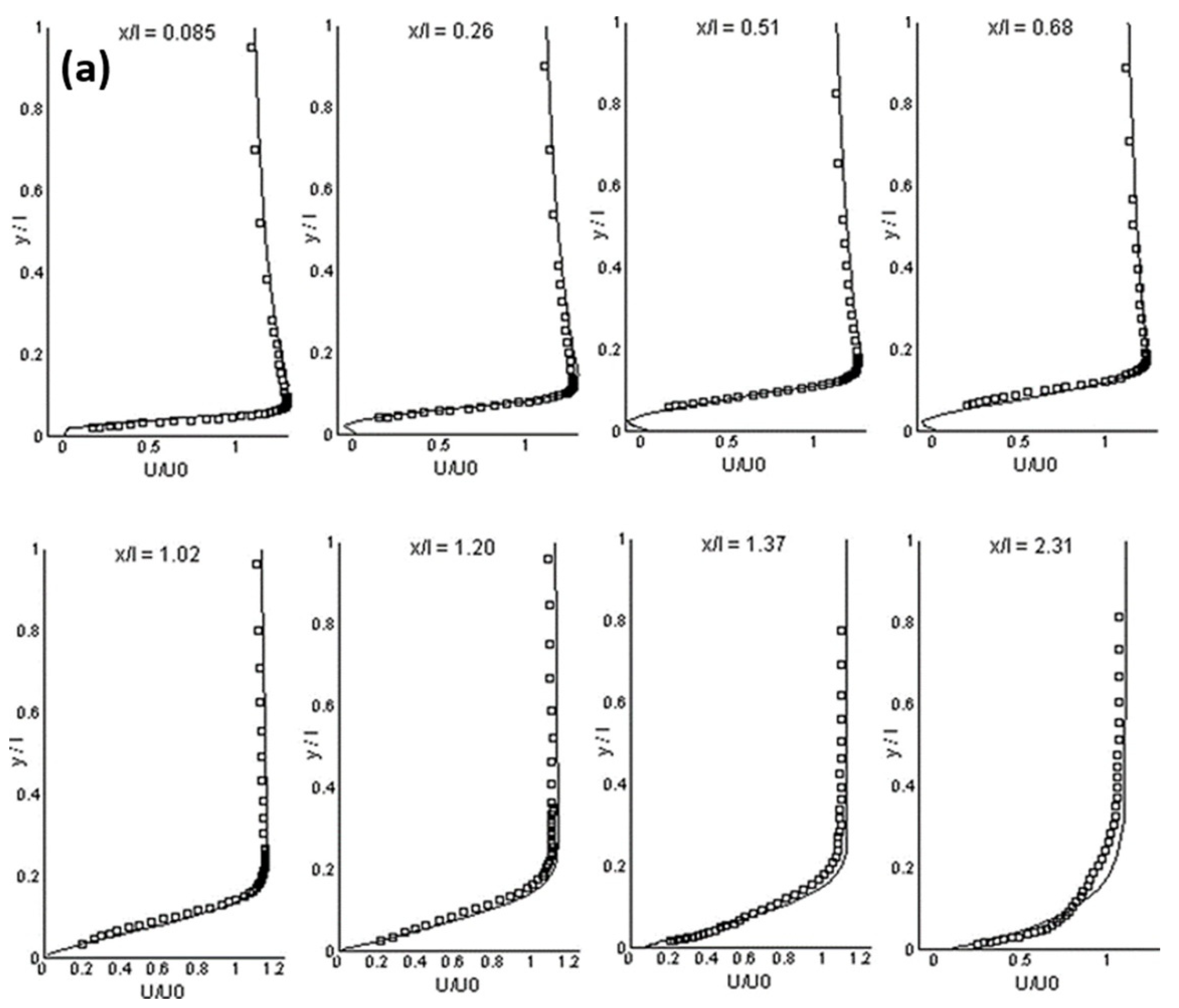
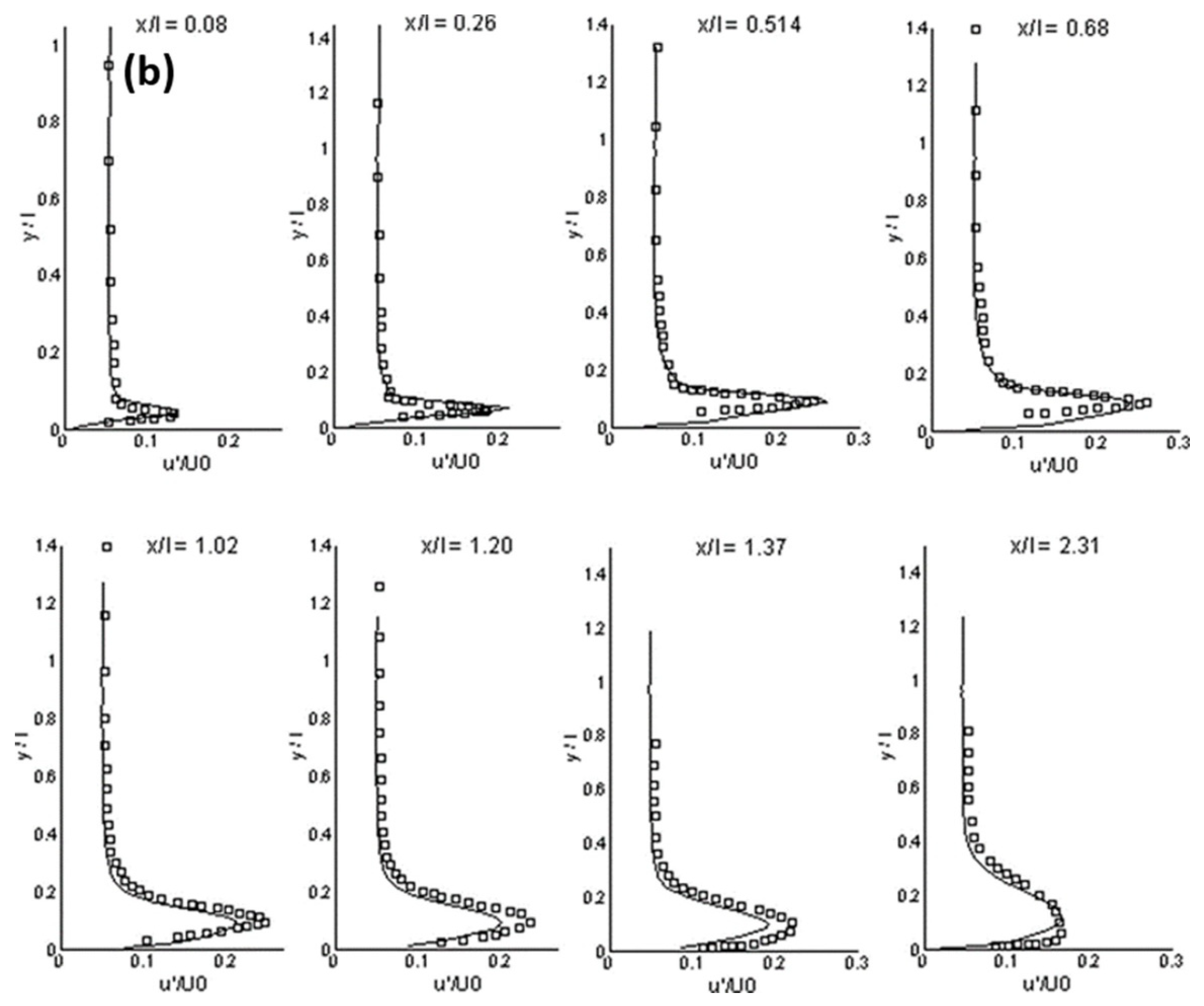
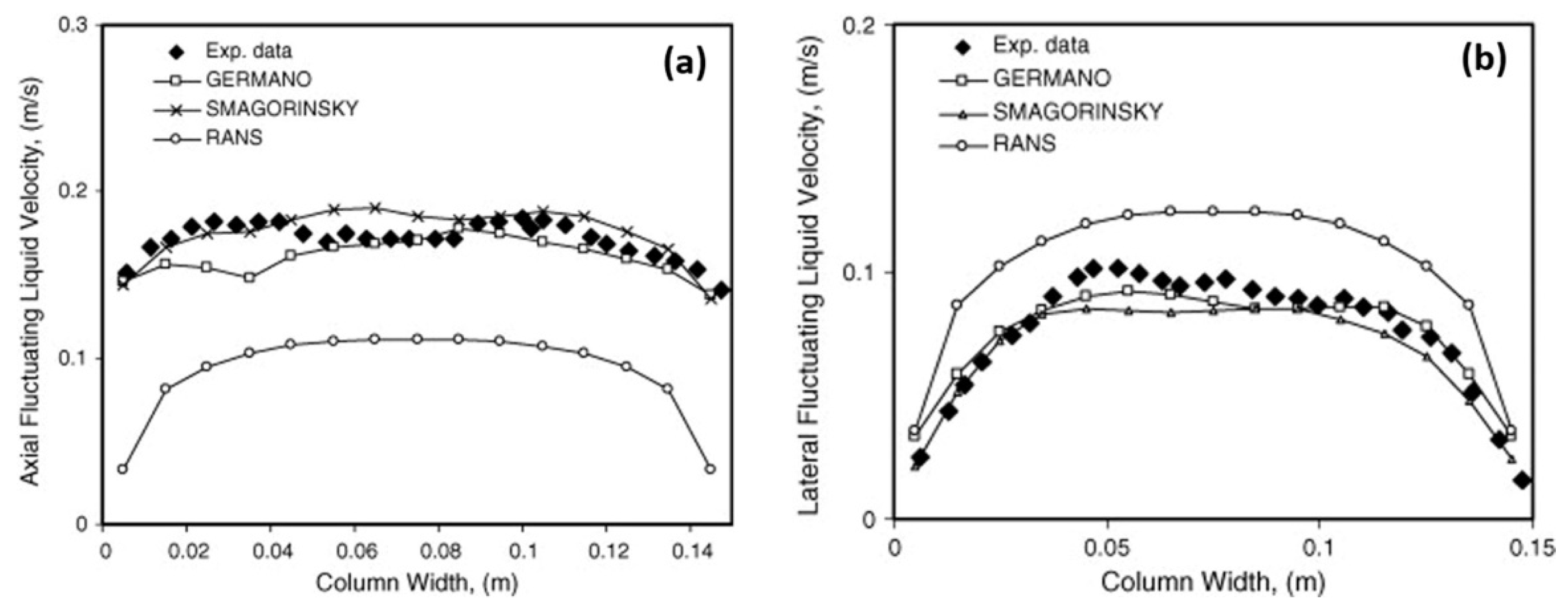
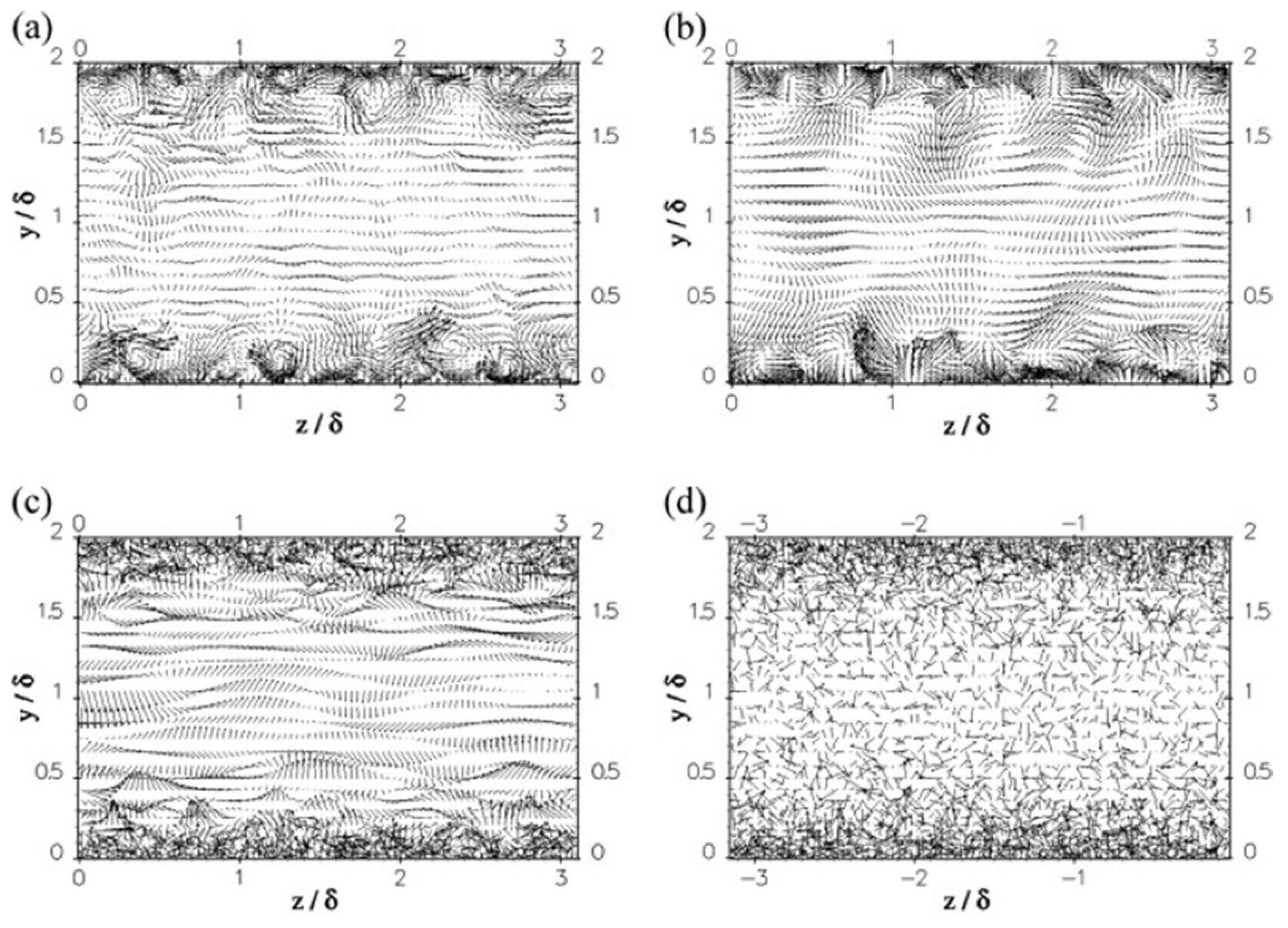

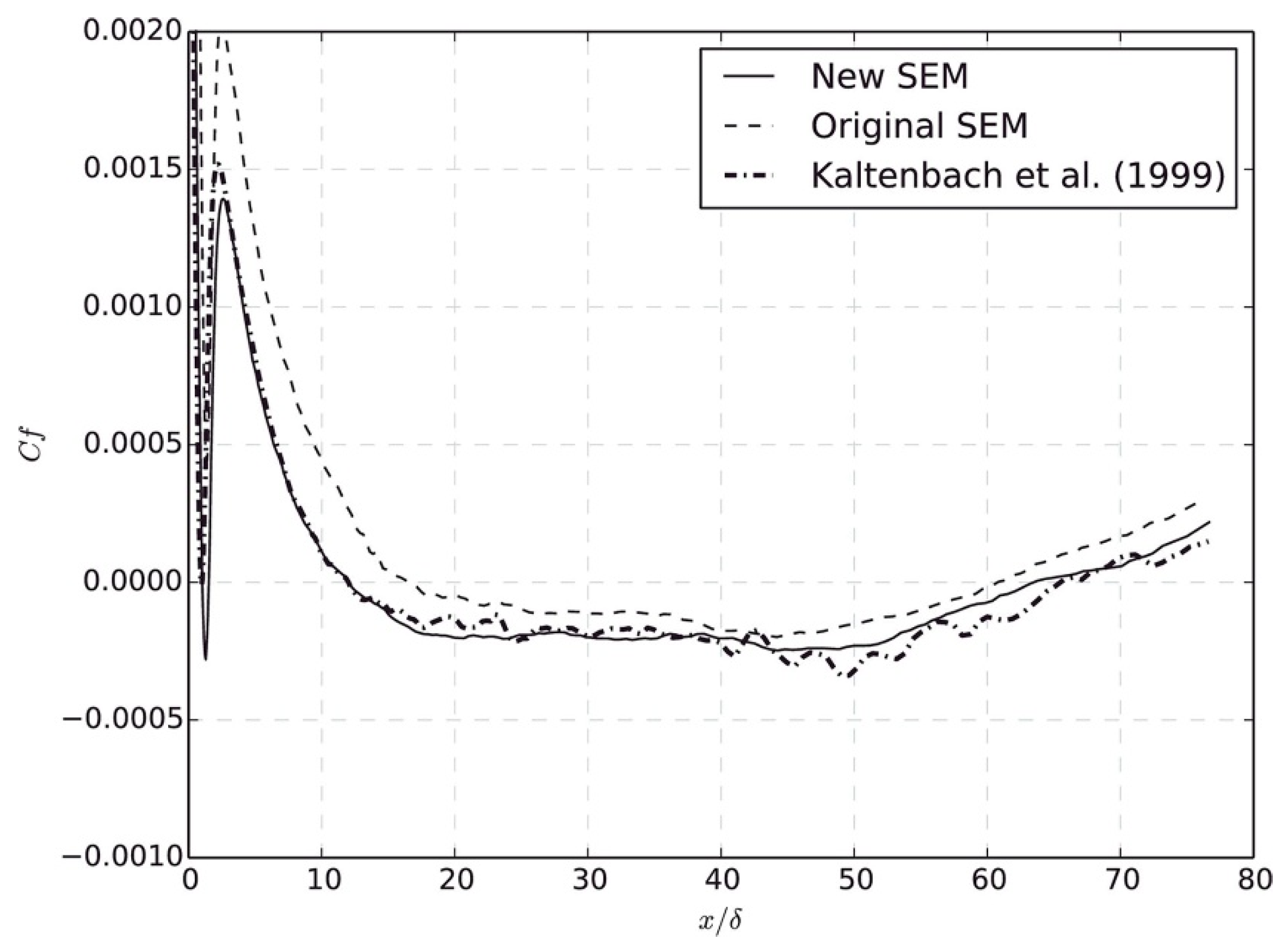
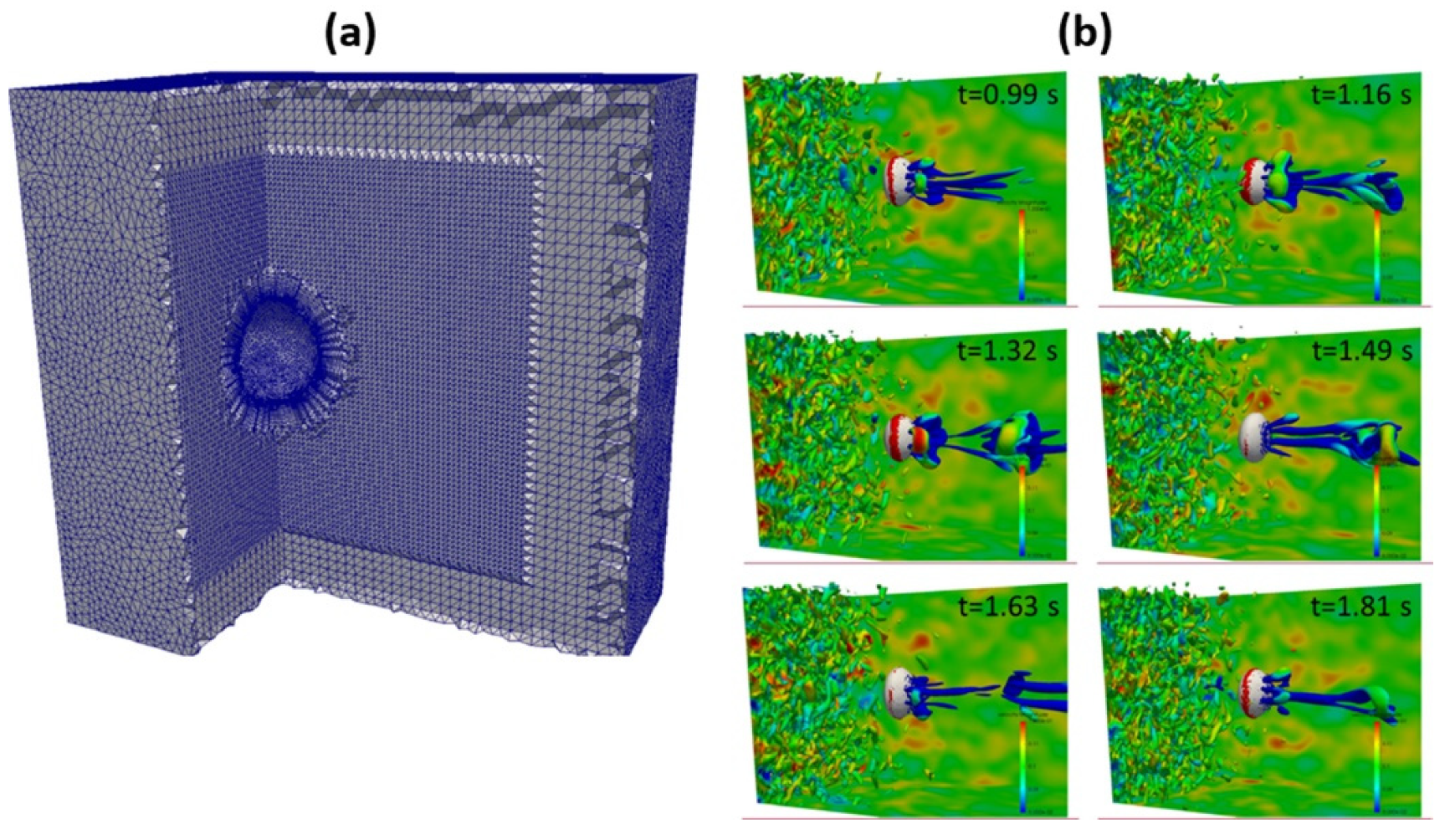


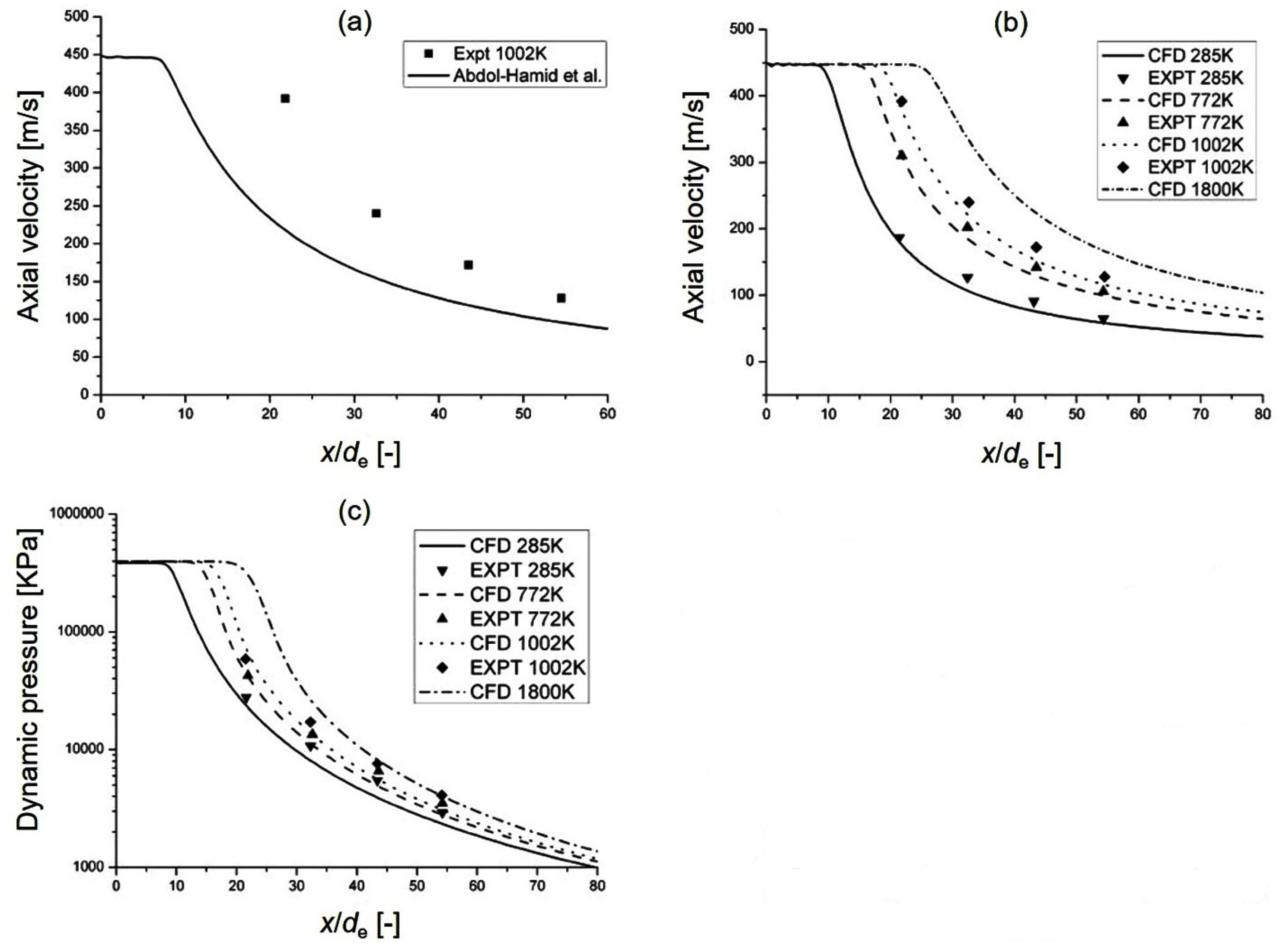
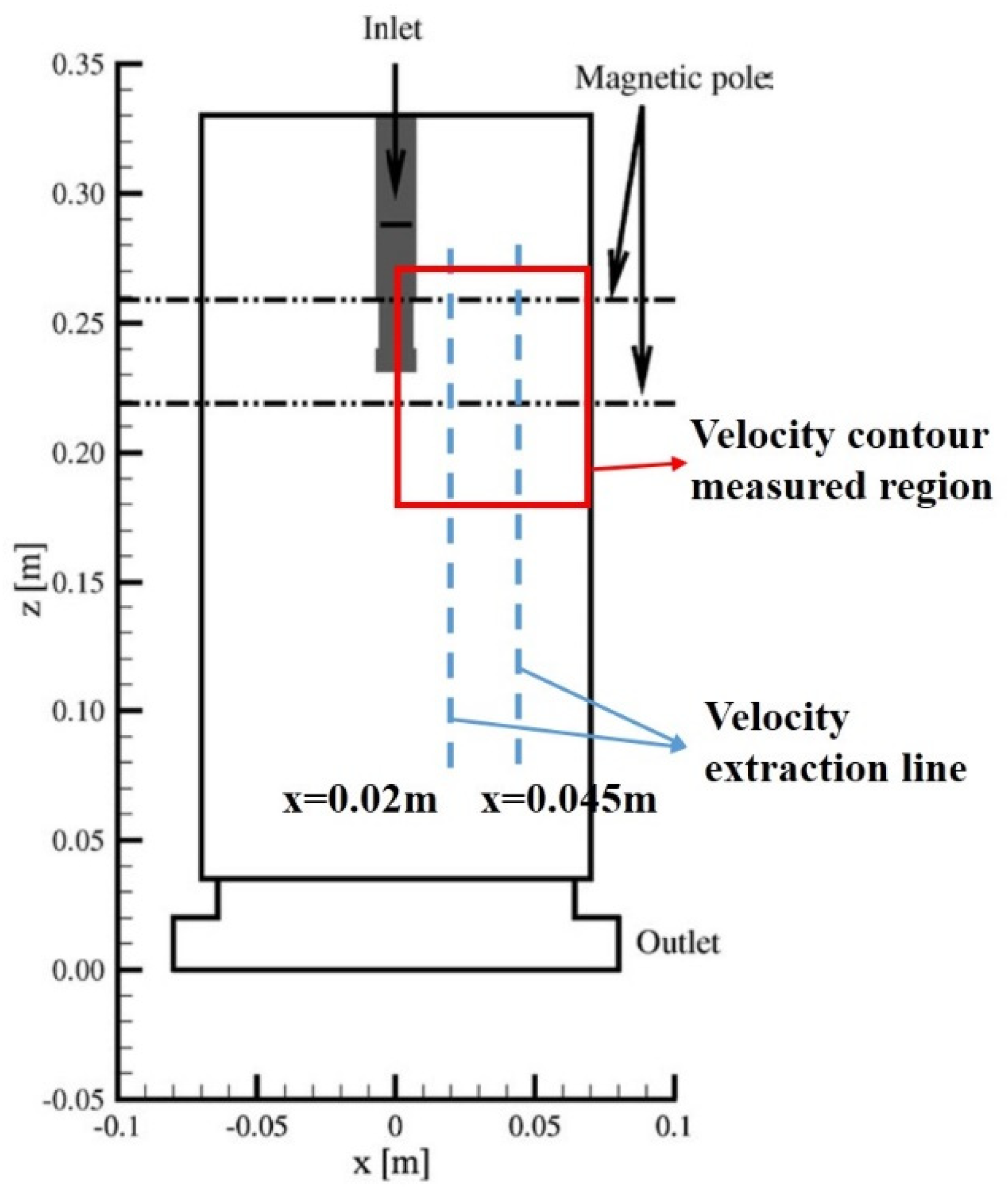
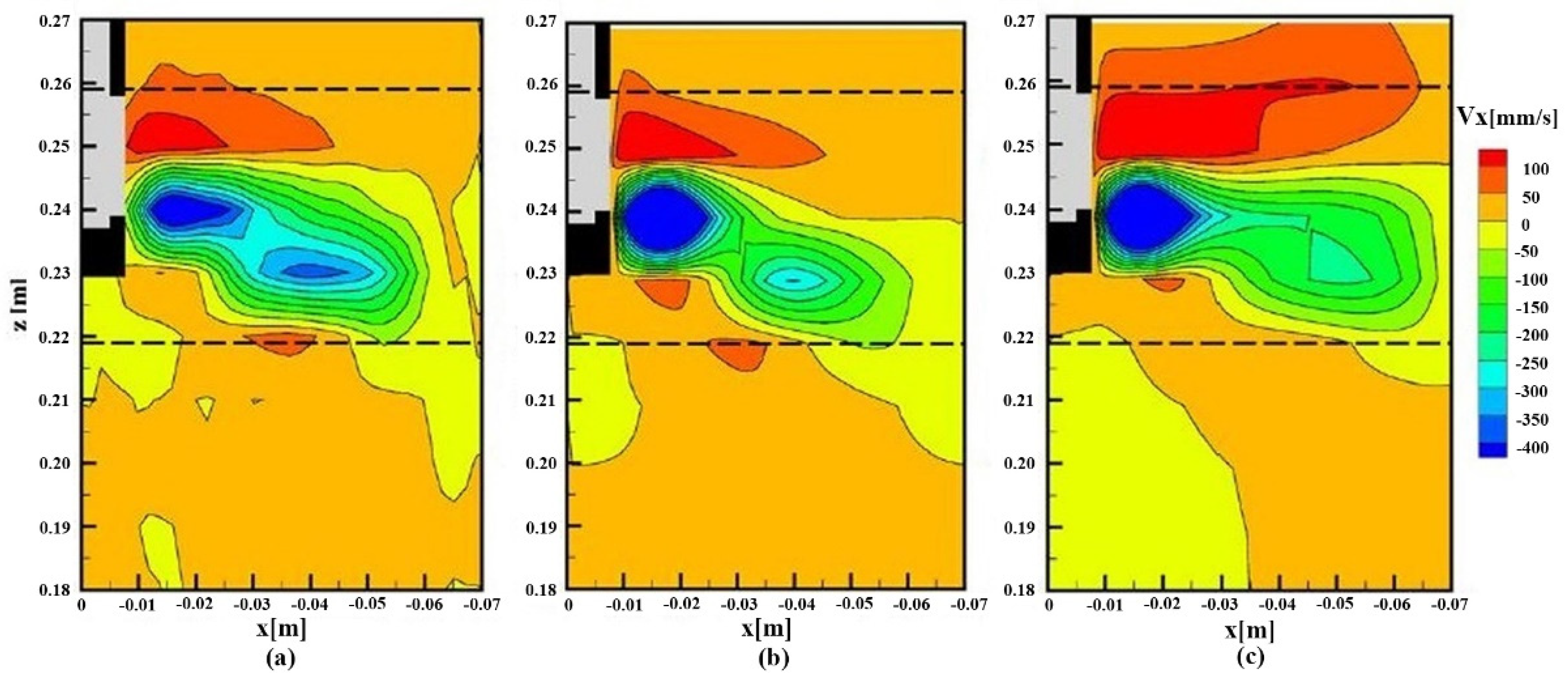
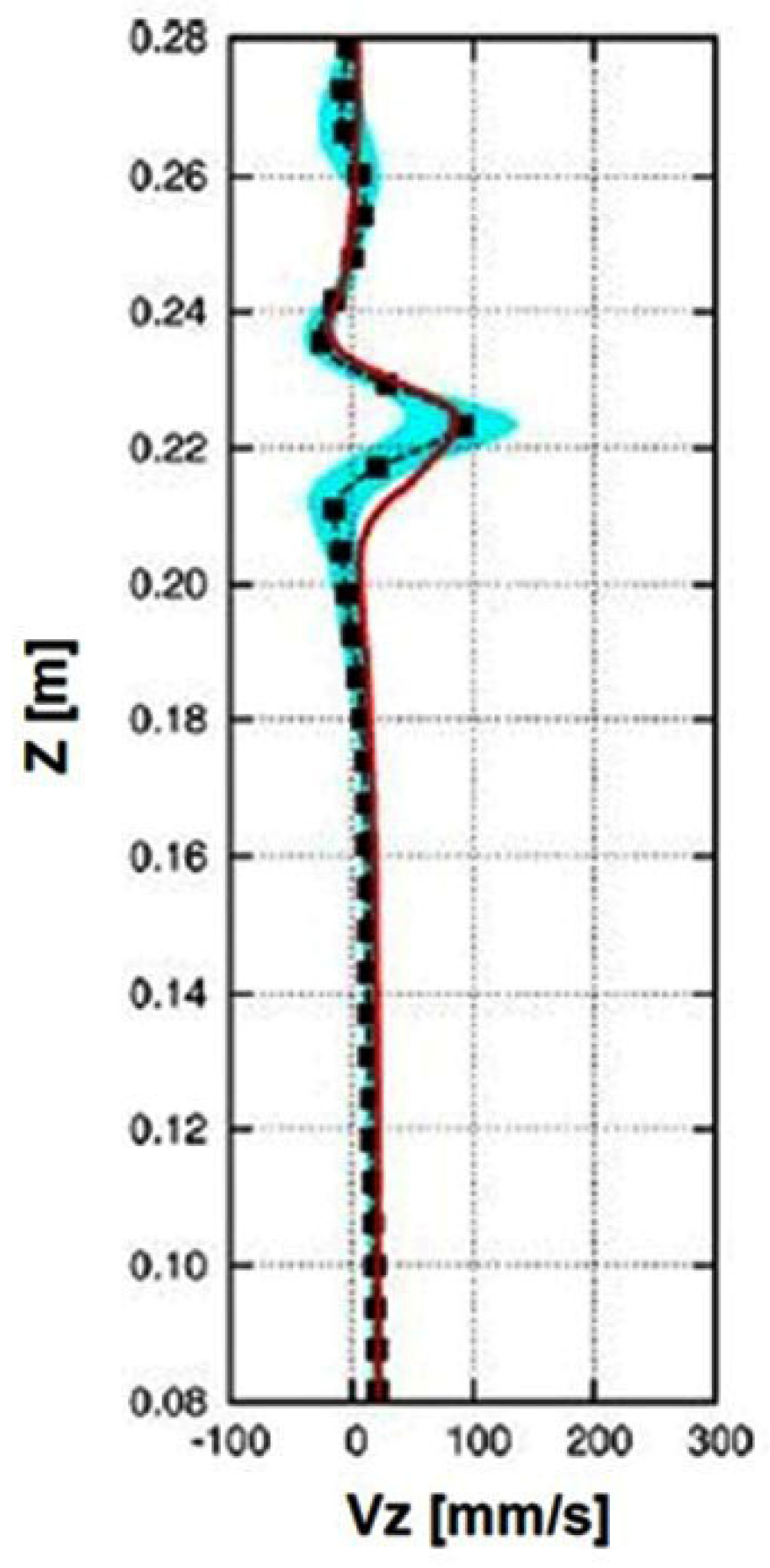
| System | Study Object | Measuring Technique and Refs. |
|---|---|---|
| Gas-solid | Solid velocity and holdup Gas velocity and holdup, bubble size Granular temperature Mass flux and heat flux | Optical fiber probe [165,166,171,172,173,174,175,176] LDA [165,166,177] PIV + DIA [164,167,178,179,180] PIV + DIA + Infrared [181,182,183] |
| Gas-liquid | Phase velocity Turbulence quantities | LDA [169,184,185,186,187,188] PIV [189,190,191,192,193] |
| Gas-liquid Gas-liquid-liquid | Mixing time | Electroresistivity probe [169,170,194,195,196] |
| Gas-liquid Gas-liquid-liquid | Cavity dimension | Video recording [170,197,198,199,200,201] |
Publisher’s Note: MDPI stays neutral with regard to jurisdictional claims in published maps and institutional affiliations. |
© 2021 by the authors. Licensee MDPI, Basel, Switzerland. This article is an open access article distributed under the terms and conditions of the Creative Commons Attribution (CC BY) license (https://creativecommons.org/licenses/by/4.0/).
Share and Cite
Wang, Y.; Cao, L.; Cheng, Z.; Blanpain, B.; Guo, M. Mathematical Methodology and Metallurgical Application of Turbulence Modelling: A Review. Metals 2021, 11, 1297. https://doi.org/10.3390/met11081297
Wang Y, Cao L, Cheng Z, Blanpain B, Guo M. Mathematical Methodology and Metallurgical Application of Turbulence Modelling: A Review. Metals. 2021; 11(8):1297. https://doi.org/10.3390/met11081297
Chicago/Turabian StyleWang, Yannan, Lingling Cao, Zhongfu Cheng, Bart Blanpain, and Muxing Guo. 2021. "Mathematical Methodology and Metallurgical Application of Turbulence Modelling: A Review" Metals 11, no. 8: 1297. https://doi.org/10.3390/met11081297
APA StyleWang, Y., Cao, L., Cheng, Z., Blanpain, B., & Guo, M. (2021). Mathematical Methodology and Metallurgical Application of Turbulence Modelling: A Review. Metals, 11(8), 1297. https://doi.org/10.3390/met11081297





